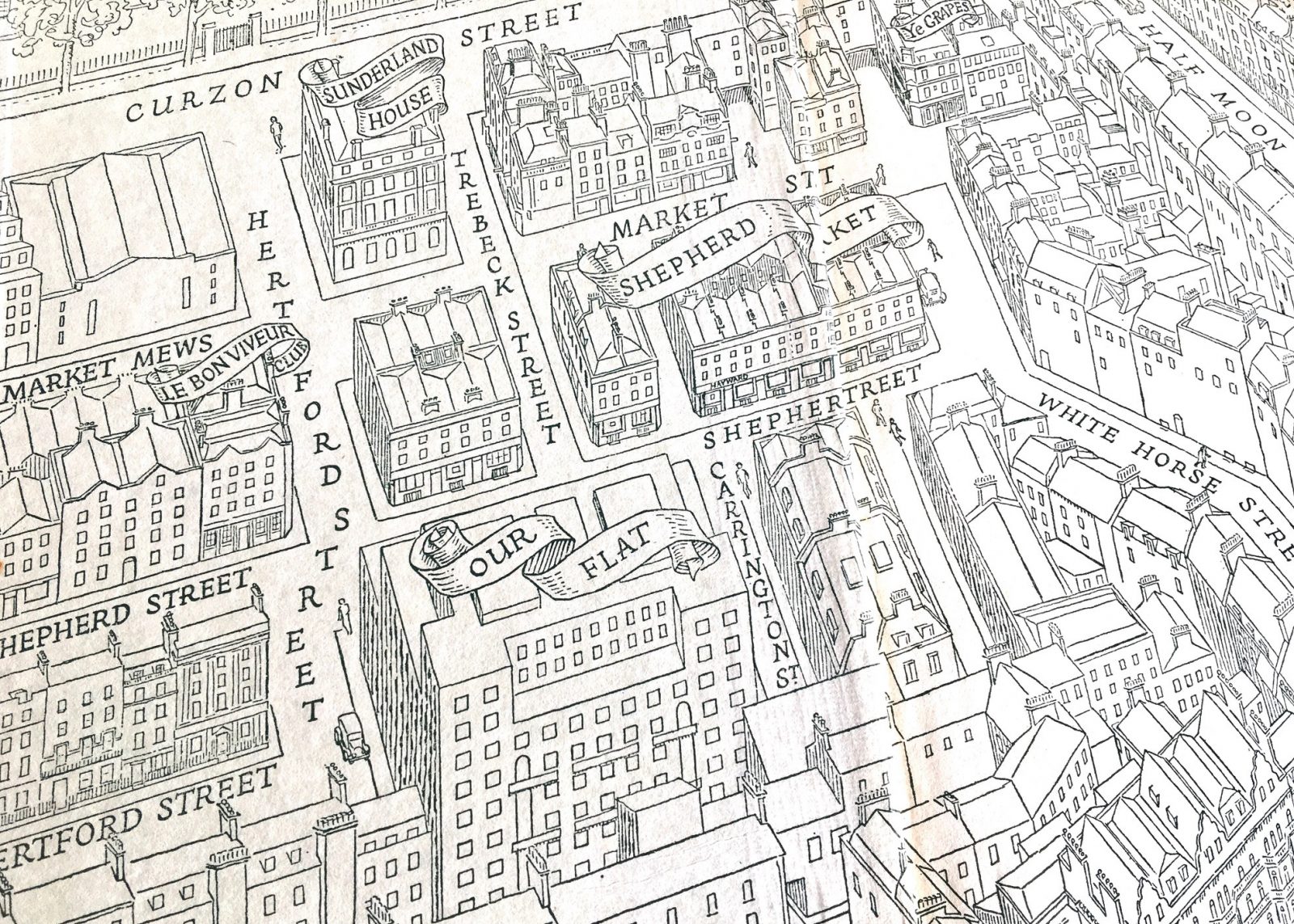By 1939, 9 Hertford Street had been converted from a family home to serviced apartments like many of the other houses in the area. They were managed by Marcus Barnett (56) who lived here with his wife Blanche (42), an unpaid domestic help. They were assisted by a team of eight staff. The couple had married ten years previously and there is no record of them having any children. Hailing from north London, Marcus’ previous occupations had been as a Merchantile Clerk then a Private Secretary. Sadly, records do not indicate what brought him to Hertford Street nor Apartment Management but we can imagine it was a very exciting and interesting move for the couple.
What was Hertford Street and the surrounding area of Shepherd Market like during this period? We are afforded wonderfully detailed accounts in Robert Henrey’s publication A Village in Piccadilly and his wife Madeleine’s book The Incredible City. The couple lived with their infant son in an apartment in Carrington House, located on the corner of Hertford Street which generously gifted them views along the length of Hertford Street and, on the other side, of Shepherd Market. Robert describes the outlook as “so admirable that I doubt if any other building… could give a more magnificent sweep over the roofs and spires of London… We towered over Shepherd Market – that village sleepily living its own life just behind Piccadilly.”.
Robert calls the area “a village in Piccadilly”, a feeling it still evokes today. Shepherd Market had “a butcher’s shop, its fishmonger, its greengrocer, the oil and candle store, and two public houses.”. All of these amenities meant that residents of Hertford Street would not have to venture very far at all for their day-to-day necessities nor for a place to socialise with their neighbours over a drink by a roaring log fire. The pubs also offered the locals an opportunity to get to know American servicemen. Madeleine records “The Americans… gathered in the evening at Shepherd’s, the rather superior public house on Hertford Street which, from the summer of 1940 onwards, had become a rendezvous for fighter pilots…”.
The already tight-knit community banded together even more during this time to protect the residents from attacks. Robert describes “Our building was now to be turned into a watch tower, from the top of which we could survey the helpless little houses below. There would be a telephone from the ‘promenade deck’ down to the basement, where a rota of fire fighters would be waiting to dash out fully equipped with all the necessary implements.”. Marcus and fellow 9 Hertford Street employee, 32 year old House Steward William Mercer, volunteered as Air Raid Wardens. Another member of the household staff, John Moorhouse, took the role of ARP Messenger.
Sadly, Robert recorded a house in Hertford Street which had become a casualty from a bombing raid. “A large private residence down the street was cut open, making it look like a sectional doll’s house. Passers-by could see into all the rooms – the bathroom on the third floor was all ready for somebody to take a bath, with a towel lying across the metal rail.”. Shepherd Market also suffered damage though the determined spirit of the community was proven once again: “The villagers boarded up their shop windows, later improving this temporary measure by cutting apertures in the centre for cellophane windows, behind which they placed a few typical goods to attract customers and show the nature of their wares. The hairdresser displayed a single bottle of perfume, the grocer a packet of tea and a plate of dried fruit.”.
We are extremely grateful to Robert and Madeleine Henrey for their accounts, also for the censuses and the 1939 Register which have enabled us to glean such a wonderful evocation of our area during the Second World War.

